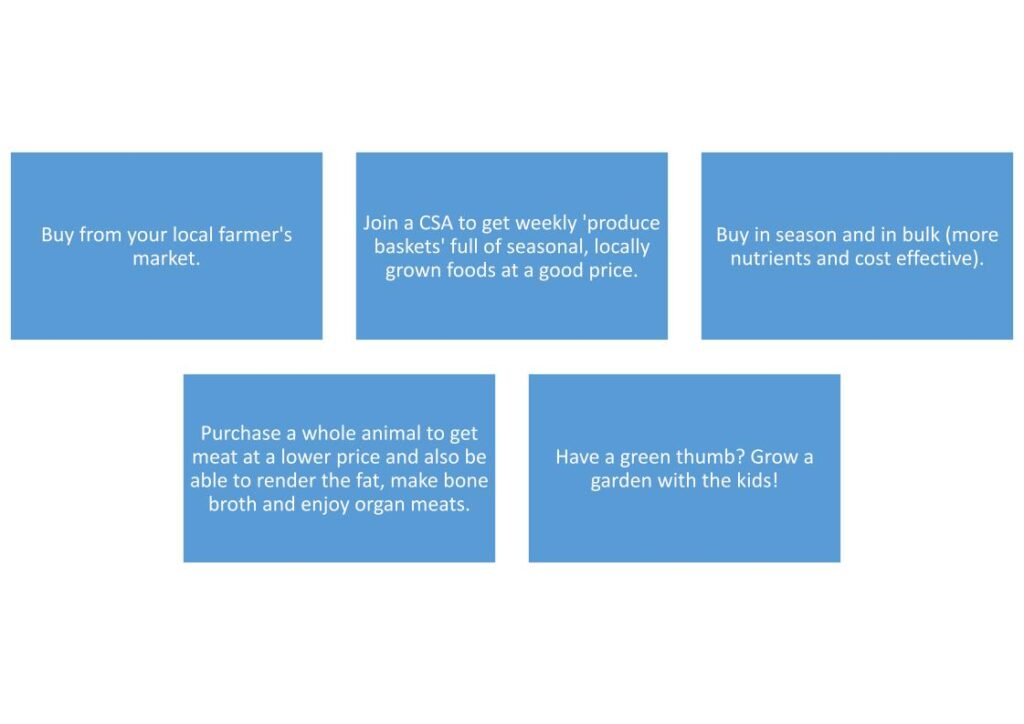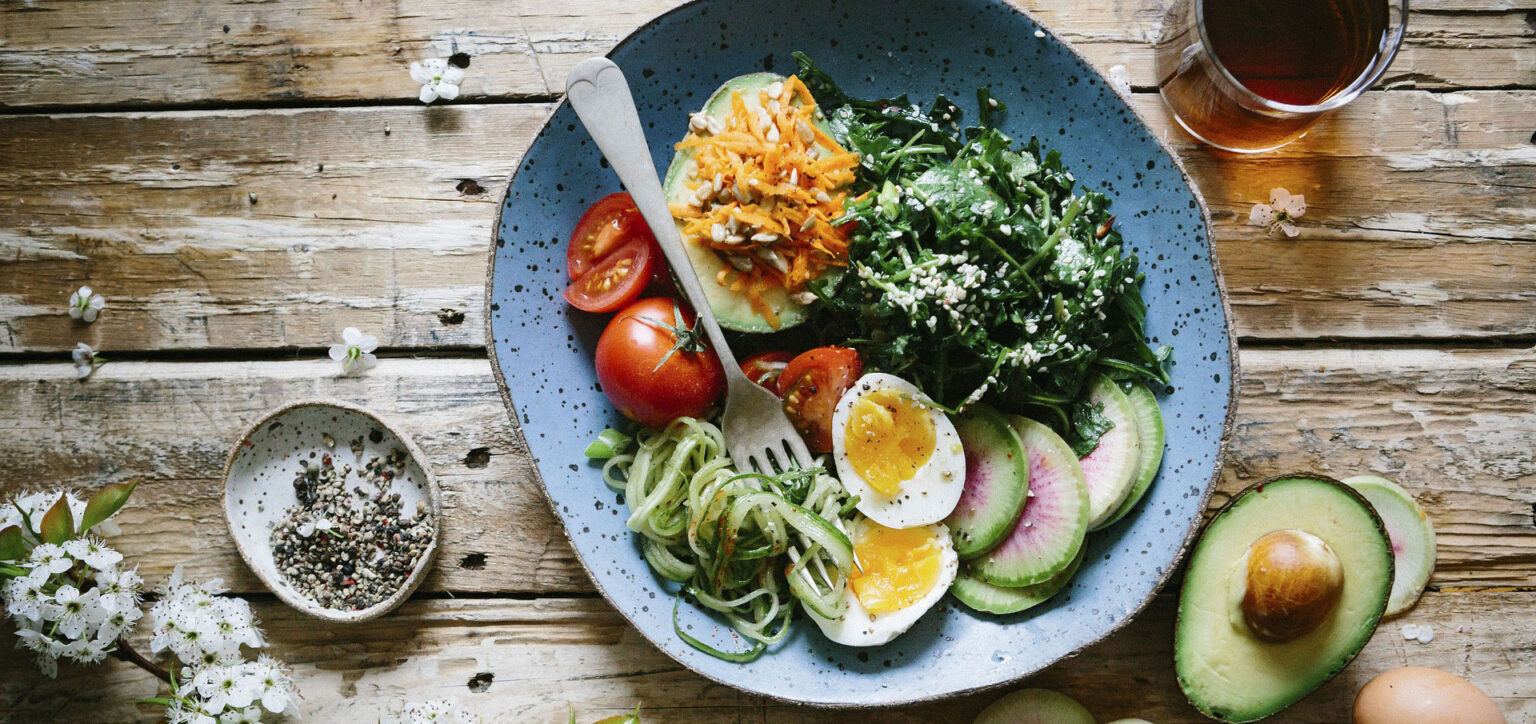You want to nourish your family with high quality, local and sustainable foods, but what does that mean exactly? You hear that it isn’t just about getting these healthy foods, but they need to be properly prepared. Teflon is bad? Why? And what are you supposed to use instead to make your eggs every morning? Wait … tupperware is bad? Then how do we store our food or send snacks in our kids’ lunchboxes?
Confused? I was too!
There is so much information out there and unfortunately a lot of it is conflicting.
In today’s blogpost I will discuss some kitchen and nutrient basics that are easy to understand and do AND they won’t break the bank!
How to source quality, local, sustainable food and why it’s a good idea to do so
Ultimately, we all want to achieve wellness. We want to feel good, think clearly, be healthy, have energy and enjoy life with those we love most. We want to THRIVE! In order to thrive, we need to nourish ourselves with nutrient-dense, properly prepared whole foods. Additionally, we should know where our food has come from and how it was grown / raised. There is no easier way to do this than getting to know your local farmers.
A visit to a farmer’s market makes a fun outing with the kids. When we meet the people who grew our food and take the time to speak with them and hear about the process, we feel more connected with our food. And when we feel connected, that’s when true enjoyment and gratitude kicks in. Let the kids choose their own fruits and vegetables, ask their own questions and listen to some cool stories about how the food they’ve chosen has been grown.
If the farmer doesn’t have a certified organic label ask him/her questions about their use of pesticides, herbicides and hormones. Just because they aren’t certified doesn’t mean they aren’t following many of the organic guidelines. Chances are they might be! Certification is expensive and time consuming and many farmers can’t afford it.
When you get home how about inviting the kiddos into the kitchen to be a part of meal prep? Each can be responsible for helping prepare the vegetable they chose. Hopefully this will all result in feeling more connected with your food and each other – and the kids trying some new veggies!
Buying from your local farmers you can also feel good knowing that you’re supporting your local farmers and economy and that you are eating food from farm to table. It hasn’t had to travel in trucks or planes for hundreds (or thousands) of miles, losing nutrients and quality along the way.
Many of the smaller farmers practice what is called ‘sustainable farming’ which means they grow many different kinds of food and raise several types of animals on the same farm. This gives the soil a chance to be nourished with different nutrients that are then passed on and packed into the foods we eat. This is in stark contrast to modern farms where only one type of food is grown in bulk, depleting the soil of its nutrients and leaving the crops also lacking in nutrients.
Buying from your local farmers will give you sustainable foods that are nutrient-dense and just waiting to nourish you and your family.
How to make sustainable food more affordable

How to properly prepare foods for optimal nutrient density
So now that you’ve bought all of these delicious nutrient-dense foods, how can you prepare them to maintain that nutrient density?
1. Baking & Roasting:
In this technique, foods are cooked in the oven using dry heat which helps retain their vitamins. You can easily control the heat which will allow you to select an appropriate cooking fat. Good for cooking in bulk!
Baked goodies: 325°- 350°F
Artisan breads: 375° – 450°F
Slow roasting: 200° – 300°F (good for whole chicken, turkey, joints of meat)
Roasting: 350°-450°F (for veggies and meats – dress them with fat and seasoning and try to space veggies apart so they don’t end up steaming instead
2. Braising & Stewing:
These are very similar techniques. First sauté onions and/or garlic in a well-chosen cooking fat. Brown the meat on each side, this well help seal in the flavor and lock in the juices. Add in your veggies and liquid (bone broth is ideal) to cover 1/3 of your food. Cook on high heat and allow it to come to a boil, then continue to cook on medium-low, covering the pot and simmer until the meat and veggies are tender. You can use the same technique with just veggies. Herbs make a lovely and delicious addition when braising / stewing.
This is an ideal cooking methods for tougher (cheaper) cuts of meat because cooking it low and slow really tenderizes the meat.
3. Sautéing and Stir-frying
This is a great technique for fast and delicious food!
Heat an appropriate fat to use in a pan and add your aromatic(s) of choice: onions, garlic, ginger, etc and cook until they become fragrant. Then just toss in your meat/veggies and stir constantly and continue to cook until it’s done.
Care must be taken to not allow the fat or food to caramelize because they lose some of their nutrients.
Other cooking techniques to try: Steaming, Pressure Cooking, Grilling and Frying.
How and why to select healthier cookware and food storage options
Now that you know how to choose your nutrient-dense food and different ways to properly prepare it, it’s equally important to consider what cookware and food storage containers are the healthiest choices for these wonderfully healthy foods. I was shocked and saddened to learn that my Teflon pans were seeping dangerous toxins into the food I cooked for my family. I was also sad that my countless and beautifully stackable plastic food containers could be infusing our stored food with plastic molecules! All of this counteracts all the hard work we put into buying and properly preparing these nutrient dense foods to nourish our family.
Now there’s no need to go and get rid of and replace everything all at once! That would be very costly and not feasible for most of us. Instead, start with some minimal kitchen basics that you can use for the bulk of your food preparation and storage and then, over time, you can phase out and replace the less than ideal options in your kitchen. In the meantime, we can avoid things like putting hot or warm food in plastic containers to minimize any plastic leeching into our food and using a glass container to heat them later. Or we can use some mason jars that we already have or other glass containers to store our food in.
Here are some basic and healthier cookware / food storage options to start with:
- 1 cast iron pan
- 1 good quality knife
- Unbleached parchment paper instead of foil
- Stainless steel water bottles & bento lunchbox containers for lunchboxes
References:
(2020).NTA Culinary Wellness part 1 guide
Rhodes, Justin. (2019, October 19). How Joel Salatin’s Farming Style CAN Feed the World. https://www.youtube.com/watch?v=a-zaAie8UZs

